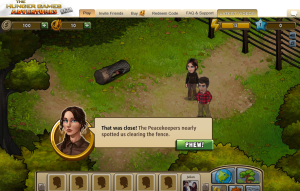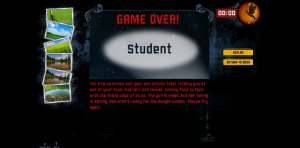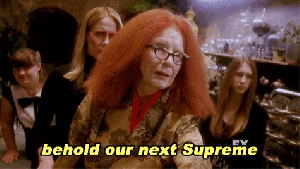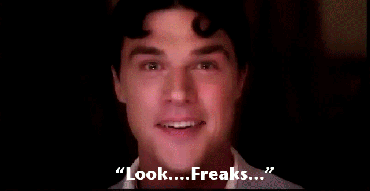With roughly 1.4 billion active Facebook users, the social media giant continues to dominate the web – but users may be shocked to know just how much of their info Facebook pays attention to. Facebook works, as a digital enclosure where a lot of user info is stored for cybernetic commodities and contextual advertising, but the ones giving this info to Facebook are the users themselves. To test just how much our actions on the social media site matter, Mat Honan, a senior staff writer with WIRED, conducted an experiment where he ‘liked’ everything for 48 hours; to see if I would have similar results I conducted the same experiment. What I found was that Big Brother really is watching every click you make.
In his article Surveillance in the Digital Enclosure, Mark Andrejevic describes digital enclosures as being “interactive spaces which restrict access to the means of interaction to those who ‘freely’ submit to the detailed forms of monitoring that take place within them.” I believe Facebook can be considered one of these interactive spaces based off of its terms of services and data policy. In section 2 of Facebook’s terms of service, the company explicitly states that you are giving them permission to use any of the content you post – this can be seen in the screengrab below:
In their data policy, Facebook also says that the information they collect is what you submit to them when using their services and can include, “information in or about the content you provide, such as the location of a photo or the date a file was created.” They state pretty clearly in their terms and conditions and in their data policy that they will be taking whatever data you provide them, they even state what they plan to do with it.
Cybernetic commodities and contextual advertising are both ways that Facebook uses the information users supply them with. Cybernetic commodities are transactionally generated demographic information about user behavior and contextual ads are ads based on the users location throughout the course of the day. We know that Facebook uses our data to do this exactly – they tell us in the data policy! “We are able to deliver our services, personalize content, and make suggestions for you by using this information to understand how you use and interact with our services and the people or things you’re connected to and interested in on and off our services.” Most users are still shocked to know that Facebook and other sites do this despite their actions being transparent inside of the terms and conditions and the data policy, which is probably because majority of users don’t read these documents due to their length – I know I am guilty of this.
In Honan’s article, I liked everything I saw on Facebook for two days. Here’s what it did to me, he describes an experiment he conducted where he literally ‘liked’ ever post or article he saw on Facebook, aside from posts about deaths or suggested relatable articles, for 48 hours to see what would happen to his feed – as stated above, I conducted the same experiment. Prior to the experiment, I used to think that the people whom I interacted with the most also posted the most and that my other 300 friends must be inactive, I wasn’t aware of how much Facebook’s surveillance effected my newsfeed. The first thing I saw was a suggestion from Facebook to like The New York Times because I had twelve friends that did already; I too now liked The New York Times.
I started liking everything I saw and over the next day I quickly noticed how everything started to become very similar. Similar to Honan, Facebook began replacing my friend’s updates with similar articles and pages to the ones I had liked hours before. Majority of the posts suggested to me had to do with news articles concerning equality, talk shows like Jimmy Kimmel Live!, SXSW and other festivals because a large amount of my friends attended this festival and I liked all of their posts about it. Everyone must have been too busy with the festival because none of my friends from Austin commented on my liking spree, the only comment I got was from my other who was upset I was liking all of my friend’s posts from college but not her post about us going out to eat together on vacation. I guess Facebook didn’t deem it worthy enough to appear in my feed. Oh well.
It is obvious that Facebook and other websites our collecting our info for their own research and to cater ads to us but we are the ones freely giving them the info and they are even telling us what is happening in the terms and conditions and the data policy. Despite these articles being at a large length that discourages users to read them, the users aren’t being forced to use the product and they do agree to have read these articles so I don’t think they can not justify complaining if they feel like surveillance is overstepping it’s boundaries. Big brother is obviously watching and if you have an issue with that then read the terms and conditions presented to you and make the choice of whether or not you want to take the risk of using Facebook. It is as simple as that.
Works Cited:
Terms of service. (2015, January 30). Retrieved March 21, 2015, from Facebook, Facebook search terms of service website, https://www.facebook.com/legal/terms
Data Policy. (2015, January 30). Retrieved March 21, 2015, from Facebook, Facebook data policy website, https://www.facebook.com/about/privacy/
Honan, Matt. “I Liked Everything I Saw on Facebook for Two Days. Here’s What It Did to Me | WIRED.” Wired. 11 Aug. 2014. Web. 21 Mar. 2015.
Andrejevic, Mark. “Surveillance in the Digital Enclosure.” The Communication Review. Web. 21 Mar 2015.












